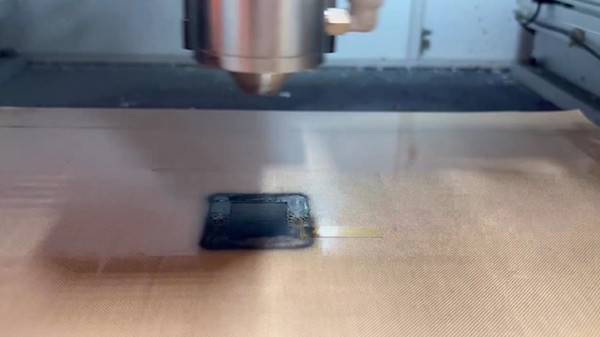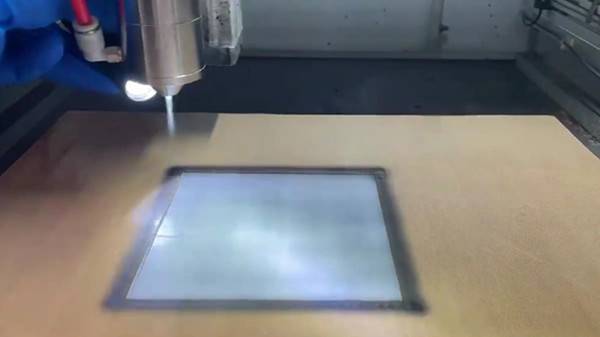Ultrasonic Spraying Electrolytic Water Diaphragm
As the core component of the electrolytic water device, the importance of the electrolytic water diaphragm is self-evident. In the process of electrolysis of water, hydrogen and oxygen are produced at the same time, and the mixture of the two is prone to explosion. The electrolytic water diaphragm is like a loyal guard, effectively separating the hydrogen and oxygen produced by the positive and negative poles to ensure the safety of the electrolysis process. At the same time, it also plays the important role of “ion channel”, maintaining the ion conduction of the electrolyte, so that the electrolysis reaction can be carried out continuously and orderly.
Common types have their own advantages
Asbestos diaphragm (a frequent visitor of alkaline electrolytic water)
The diaphragm made of processed asbestos has a porous structure and provides a channel for ion migration. It is cost-friendly and can better separate gas and conductive ions in the alkaline electrolytic water system. However, it should be noted that asbestos is a carcinogen, and its production, use and waste disposal require strict protection, and its ion conduction efficiency needs to be improved, and it is also prone to blockage and damage.
Proton exchange membrane (protagonist of proton exchange membrane water electrolysis)
This type of membrane made of special polymers, the molecular chain contains functional groups that conduct protons, such as perfluorosulfonic acid membrane. It is highly selective for protons, can accurately control the ion path, greatly improve the electrolysis efficiency, produce high-purity hydrogen, and the device starts and responds quickly. However, its preparation process is complex, the cost is high, and the requirements for the quality of the influent water are almost strict.
Anion exchange membrane (key to anion exchange membrane water electrolysis)
The molecular structure contains fixed cationic groups and mobile anions, and has good selective permeability to hydroxide ions. Cheap non-precious metal catalysts can be used, and the requirements for water quality are relatively loose. However, the ion conductivity of some products is insufficient, and the chemical and mechanical stability also needs to be strengthened.
Ceramic diaphragm (preferred for solid oxide water electrolysis)
Made of ceramic materials, such as yttria-stabilized zirconium oxide, it has good ionic conductivity at high temperatures. It has high thermal and chemical stability and good coupling with high-temperature heat sources. However, it is difficult to prepare, costly, brittle, easy to break, and has high operating costs.
Strict performance requirements
The water electrolysis membrane needs to have high ion selectivity to ensure the orderly migration of specific ions; high ion conductivity to accelerate the reaction rate; good chemical stability to resist the erosion of electrolyte and chemical reactions; sufficient mechanical strength and flexibility to adapt to complex working conditions.
Ultrasonic spraying brings innovation
Chifei ultrasonic spraying technology has significant advantages in the field of water electrolysis membranes. By precisely controlling the spraying amount and membrane thickness, the ion conductivity and stability of the membrane can be improved. It can evenly coat the material on the surface of the membrane and optimize the microstructure of the membrane, thereby improving the ion selectivity. In addition, this technology reduces material waste, helps to reduce production costs, and provides an effective way to improve the performance and control costs of water electrolysis membranes.
Clear development trend
In the future, water electrolysis membranes will develop in the direction of performance improvement, cost reduction and adaptation to renewable energy. The development of high-performance materials, optimization of preparation processes, and enhanced adaptability to intermittent power sources will push the water electrolysis hydrogen production industry to a new height and help the widespread application of clean energy.
About Cheersonic
Cheersonic is the leading developer and manufacturer of ultrasonic coating systems for applying precise, thin film coatings to protect, strengthen or smooth surfaces on parts and components for the microelectronics/electronics, alternative energy, medical and industrial markets, including specialized glass applications in construction and automotive.
Our coating solutions are environmentally-friendly, efficient and highly reliable, and enable dramatic reductions in overspray, savings in raw material, water and energy usage and provide improved process repeatability, transfer efficiency, high uniformity and reduced emissions.
Chinese Website: Cheersonic Provides Professional Coating Solutions



